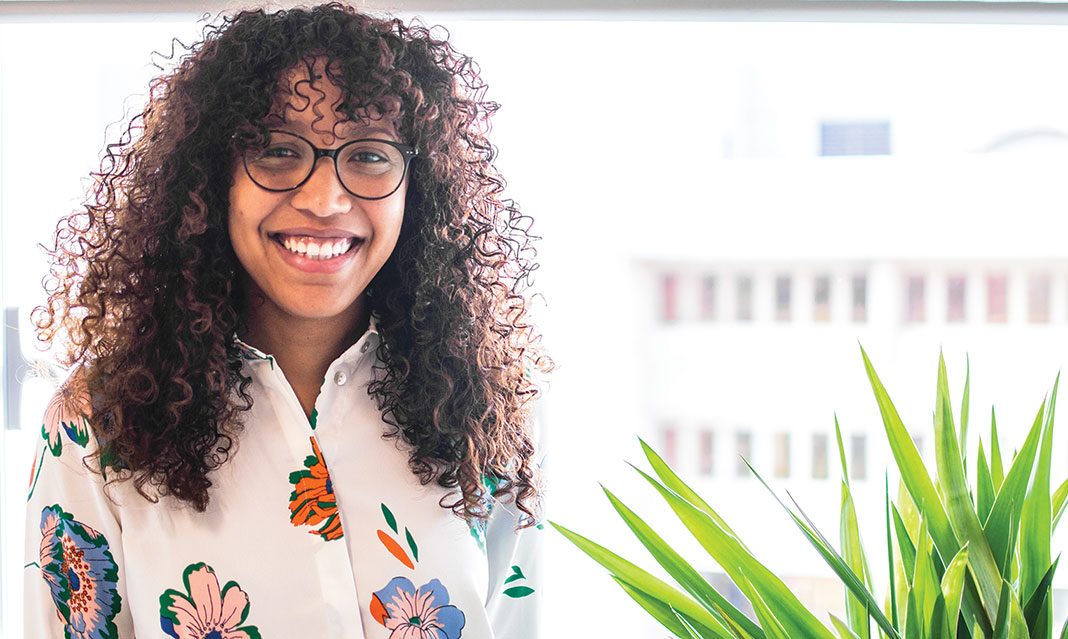Born and raised in Cape Town, South Africa, Lauren Schroeder, an assistant professor in biological anthropology at UTM, never thought that she’d leave her hometown. But after completing her university studies and Ph.D. at the University of Cape Town, Schroeder landed herself a post-doctoral research position at the University of Buffalo in New York and then joined the UTM faculty in July 2017. Now, she is one of 16 UTM professors to receive the Connaught New Researcher Award, an annual program that provides funding to new assistant professors to kick-start their research career.
Describing her path to academia as “convoluted,” Schroeder explains that from a very young age she knew she wanted to become a scientist. As an undergraduate, Schroeder began her university career pursing a degree in astrophysics, but when she enrolled in a second-year elective course on human evolution her interests changed completely. Immediately, she switched her major from astrophysics to biological anthropology.
“I was always interested in the past and in the human body and how amazing it is,” Schroeder reflects. “When I started grad school, I knew the ultimate goal was to become a professor. I was always interested in the types of questions about who we are and where we come from. I think as young people we don’t necessarily think of that often and I think we should because these questions tell you how connected we all are in the world.”
Building off topics she explored in her Ph.D., Schroeder currently focuses her research on evolutionary processes within the hominin fossil records. She analyzes bones to determine how evolution has affected the way humans look and how our morphology has changed over time. In particular, Schroeder looks at three evolutionary processes: genetic drift, a random process that causes populations to evolve over time, natural selection, the change through time due to shifts in environment and adaptation, and hybridization, the interbreeding of two separate species that cause new types of morphology within populations.
Once Schroeder completed her Ph.D., she decided to concentrate on hybridization within human evolution and how this process can cause and introduce new variations within species. Currently she studies the morphology, the form, and bone structure, of mammals that hybridize. Schroeder and her colleagues hope to apply their discoveries to evaluate the evolutionary process in human fossil records. “The big project I’m working on is using mammalian models that we know have hybridized, we can see it and it happens in the wild. We study their morphology and try to create a model that we can apply to the fossil record,” she explains.
Schroeder received the Connaught New Researcher Award for her research project on “coywolves,” a coyote-wolf hybrid inhabiting our Mississauga community. According to Schroeder, north eastern U.S. and south-eastern Canada have been labelled a “hybrid zone” for this animal population.
While her research includes studying mammalian models such as mice, baboons, gorillas, and whales, Schroeder also wants to collect morphological data on this North American hybrid canine. Through her creation of these models, Schroeder and her team have discovered that many of these hybrid animals exhibit the same “morphological signature.” Schroeder explains that a morphological signature indicates how hybridization has changed the way a species looks.
Although the different hybridized species don’t bear any physical resemblance, Schroeder notes that the process has affected these populations in the same way.
“You may notice that sometimes coyotes look huge, and sometimes people mistake them as wolves because they are very big. This is actually one of these ‘signatures,’” Schroeder explains. “Hybrids may look more like one parent than the other, if the parent is a wolf and the other is a coyote, the coywolf may look more wolfish. That’s a simplistic way to look at it because the coyotes here don’t have a wolf mother; instead, it’s been about 100 years that they’ve been hybridizing within this region.”
To collect data on these coywolves, Schroeder works with the New York State Museum in Albany that contains approximately 500 skulls from this species. Instead of analyzing soft tissue, Schroeder measures and investigates the bone structure in skulls.
In November, Schroeder will begin data collection with the Royal Ontario Museum as they currently possess a large selection of coyote and grey wolf skulls.
When asked about her most memorable research experience, Schroeder says that one amazing experience springs to mind. In 2014, she was given the opportunity to join a team tasked to describe a newly found fossil specimen from a site in South Africa.
“We were the first ones to describe these fossils, to look at these fossils, and to name the species. The first step we had to do was look at the fossils and determine whether these are a new species or part of something else, and it actually was a new species. That was probably the coolest thing I’ve ever done,” Schroeder says.
The research team described the fossils, published data on the fossils, and created 3D scans of these fossils that the public can download online. However, they were missing one crucial piece of information because the fossil site was undated. They estimated the fossils to be approximately one million years old, but recently found out that they might be younger, only 300,000 years old.
For Schroeder, anthropology offers us an avenue to explore answers to bigger questions of human evolution. Through her study of morphology and bone structure, Schroeder has found some common ground between all species.
“Who we are, where did we come from, and how did we get here, are things that us humans should be thinking about,” she says. “Anthropology is really good at celebrating difference, but it also allows you to see the similarities in everything and everyone.”



